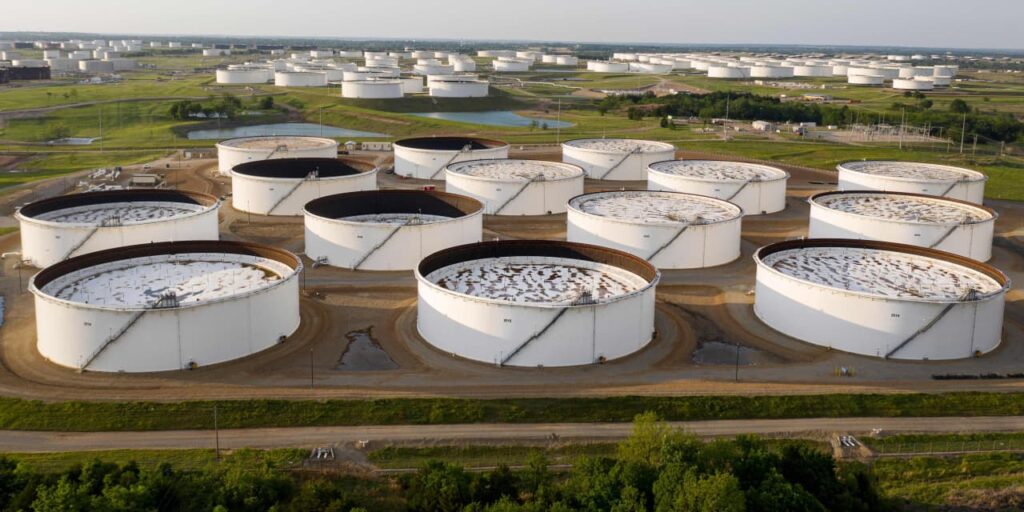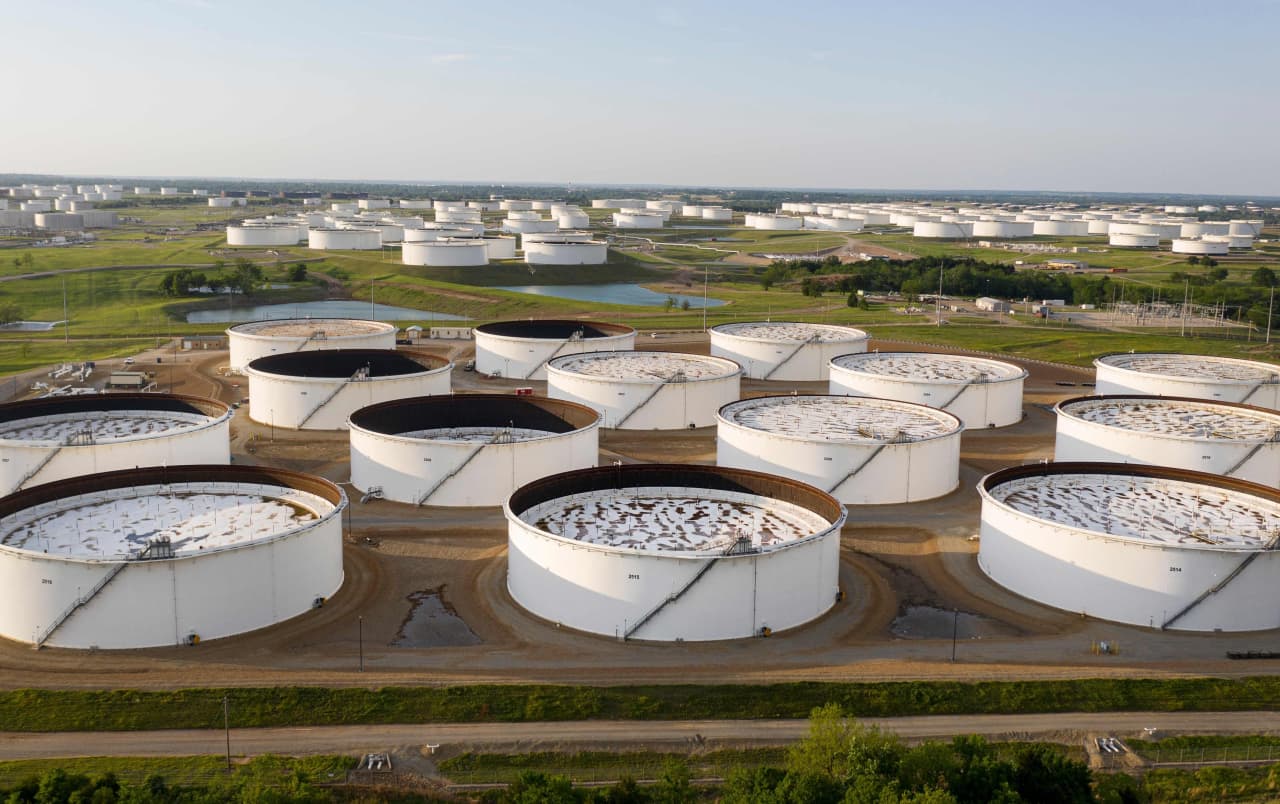Oil prices climb after smaller-than-expected weekly rise in U.S. crude supplies

U.S. oil futures settled higher on Thursday, after official data revealed a fourth straight weekly climb in U.S. crude inventories that was also smaller than most market expectations.
Natural-gas futures, meanwhile, finished lower after a rally Wednesday that saw prices post their biggest daily percentage rise since July 2022.
Price moves
-
West Texas Intermediate crude for April delivery
CL00,
+0.82% CL.1,
+0.82% CLJ24,
+0.82%
rose 70 cents, or 0.9%, to settle at $78.61 a barrel on the New York Mercantile Exchange. -
April Brent crude
BRN00,
-0.02% BRNJ24,
-0.04% ,
the global benchmark, added 64 cents, or 0.8%, at $83.67 a barrel on ICE Futures Europe. -
Back on Nymex, March gasoline
RBH24,
+1.68%
climbed by 2.1% to $2.33 a gallon, while March heating oil
HOH24,
+1.83%
added 1.7% to $2.75 a gallon. -
March natural gas
NGH24,
-2.48%
declined by 2.3% to $1.73 per million British thermal units, after a 12.5% jump in the previous session.
Oil supplies
“Oil markets continue the battle royale between geopolitical concerns and fundamentals,” said Matt Smith, lead oil analyst for the Americas at Kpler. “Deep refinery maintenance rolling on from the U.S. into Europe and then China in the coming months means if it weren’t for geopolitical tension, prices would be lower.”
“‘Deep refinery maintenance rolling on from the U.S. into Europe and then China in the coming months means if it weren’t for geopolitical tension, [oil] prices would be lower.’”
Oil futures ended near the top of the price range seen over the last three weeks, getting an added boost after the Energy Information Administration on Thursday reported that U.S. commercial crude inventories rose by 3.5 million to 443 million barrels for the week ended Feb. 16.
“Despite robust crude exports, ongoing refinery maintenance and firm crude imports have ushered in another crude build,” said Smith.
Late Wednesday, the American Petroleum Institute reported a larger crude inventory climb of 7.2 million barrels, according to a source citing the data.
On average, analysts had expected the EIA report, which was released day later than usual because of Monday’s Presidents’ Day holiday, to show an increase of 4.4 million barrels, according to a survey conducted by S&P Global Commodity Insights.
The survey found analysts expected refinery runs to remain soft for the rest of the month as BP PLC’s
BP,
BP,
Whiting, Indiana, facility remains shut due to an unexpected power outage and a number of other refineries continue to undergo maintenance. The EIA reported that U.S. crude-oil refinery inputs edged up by 31,000 barrels a day to average 14.6 million barrels a day last week.
The EIA report also revealed weekly supply declines of 300,000 barrels for gasoline and 4 million barrels for distillates. The S&P Global Commodity Insights analyst survey showed forecasts for inventory declines of 3.2 million barrels for gasoline and 1.6 million barrels for distillates.
“Given low refinery runs, it is not surprising to see draws to the products — although implied demand for both gasoline and distillates is lagging year-ago levels on the 4-week moving average,” said Smith.
U.S. oil production was unchanged in the latest week, holding at a record 13.3 million barrels a day, the EIA said, while crude stocks at the Cushing, Okla., Nymex delivery hub were up 700,000 barrels at 29.5 million barrels.
Natural gas retreats
Natural-gas futures finished lower Thursday after a Wednesday bounce of 12.5%, their biggest one-day percentage gain since July 7, 2022. The rally had come on the heels of a lower production outlook from Chesapeake Energy Corp.
CHK,
a major shale producer.
On Thursday, the EIA reported that U.S. natural-gas supplies in storage declined by 60 billion cubic feet for the week ended Feb. 16. On average, analysts forecast a decline of 65 billion cubic feet, according to S&P Global Commodity Insights.
The EIA data, however, included a downward revision to previously reported stocks for the week ended Feb. 9, with the EIA revising the stock total for that week to 2.53 trillion cubic feet from 2.535 tcf.
The report marked “another bearish withdrawal,” given that the weekly supply decline was more than 100 bcf less than the five-year average for this time of the season, said Troy Vincent, senior market analyst at DTN. Natural gas stocks are around 12% higher year-on-year and just over 22% higher than the five-year average, he said.









